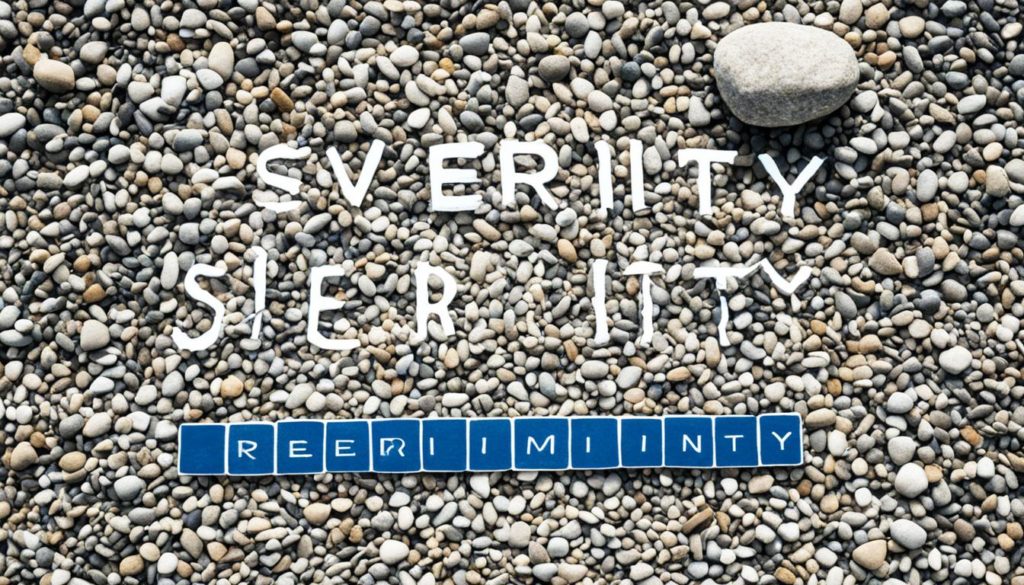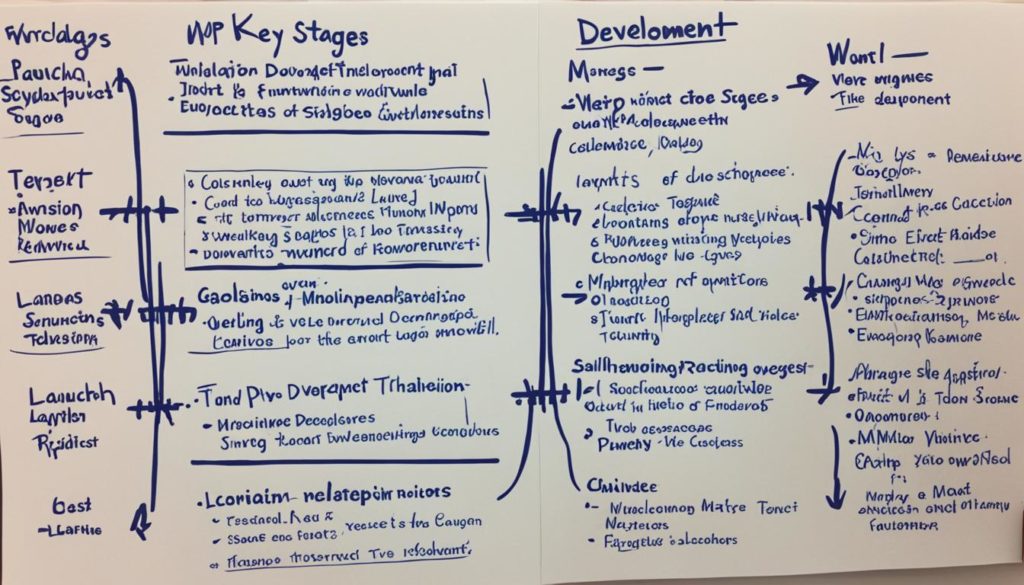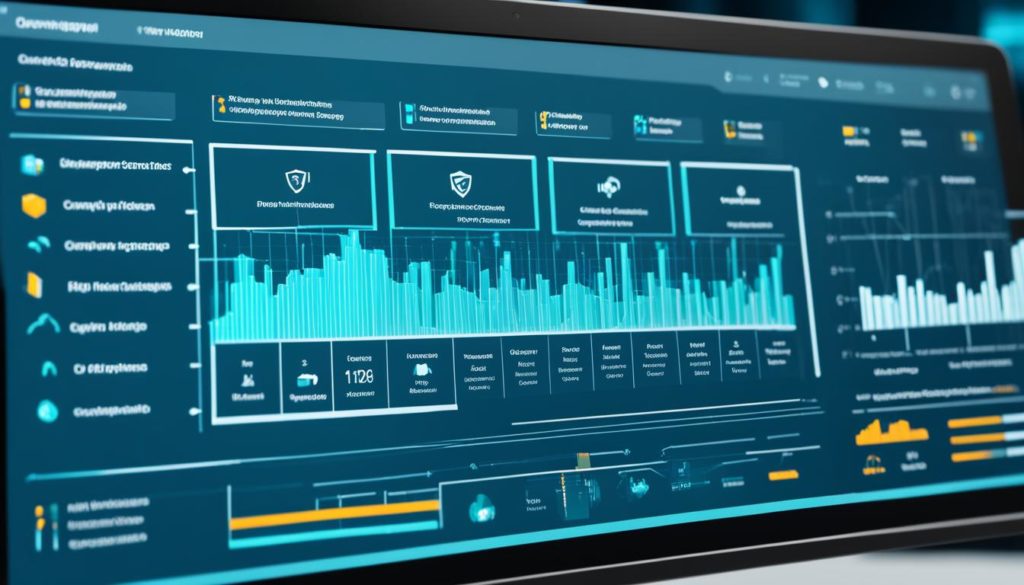
Did you know that 35% of Amazon’s eCommerce revenue comes from product recommendations? This shows how big of a role recommendation systems play in our online lives. They make finding what we like easy and fun. With intelligent algorithms, places like Amazon, Netflix, and Spotify suggest things we’ll love, making our online time better.
These systems make us happier by really getting to know us. They look at what we watch, buy, and rate. For example, Spotify’s Discover Weekly playlist finds new music just for us, keeping us engaged. Artificial intelligence makes these systems even smarter, changing how we use digital platforms.
As Jensen Huang, the CEO of Nvidia, said, “recommender systems are the most important AI system of our time.” This shows how key they are in our digital world. These systems not only keep us coming back but also make our time online longer. They’re building a future where tech knows us better, opening up new ways to discover and connect.
Key Takeaways
- 35% of Amazon’s eCommerce revenue is driven through product recommendations, showcasing the power of recommendation systems.
- Spotify’s Discover Weekly playlist uses hybrid filtering to enhance music discovery based on user preferences.
- Recommendation systems significantly improve consumer engagement and session times on digital platforms.
- These systems utilize collaborative filtering and content-based filtering to offer personalized content and product suggestions.
- Artificial intelligence integration has revolutionized the accuracy and effectiveness of recommendation systems.
Introduction to Recommendation Systems
Recommendation systems help us navigate through endless choices. They use a recommendation engine to suggest products and content we might like. This makes our experience better by showing us things we might enjoy.
These systems work by analyzing what we like and how we interact with things. They aim to boost our engagement and happiness by giving us personalized suggestions.
The heart of these systems is their ability to make algorithmic recommendations. They use methods like collaborative filtering and content-based filtering. Collaborative filtering looks at what similar users like. Content-based filtering uses more detailed information to make recommendations.
- Collaborative Filtering: This method predicts what you might like by looking at what others have liked. It can be based on users or items, making suggestions based on similarities. The more you interact, the better the suggestions get.
- Content-Based Filtering: This method looks at extra details about you and the items, like age or categories. It helps with new users or items that don’t have many interactions yet.
New advancements in deep learning, like Wide & Deep models, have made recommendations even better. Companies like Netflix and YouTube have invested a lot in their recommendation engines to keep users happy.
Understanding recommendation systems means knowing about bias and variance. For example, some methods are good at predicting but not always right. Others are more accurate but might miss the mark sometimes. Content-based methods assume a hidden interaction model but can be biased.
The Evolution of Recommendation Systems
Recommendation systems have changed a lot since they started. They began with simple methods in the early 1990s. Then, they moved to more complex content-based filtering in the late 1990s.
In the early 2000s, they combined both methods. This made their recommendations more accurate.
The first recommender system was made by Elaine Rich in 1979. It was called Grundy. It used algorithms to guess what users might like based on what they had liked before.
Amazon’s use of these systems shows how important they are. About 35% of its sales come from these recommendations.
Machine learning and AI changed things a lot in the late 2000s. Deep Learning, like AutoEncoders and ConvNets, made systems smarter. Now, Netflix and Amazon give users content that’s just for them.
Today, systems also look at where you are and when. They use special knowledge to make better suggestions. Reinforcement learning and explainable systems are also big now.
Collaborative filtering is still key. It uses user and item data to make guesses. But, it faces problems like not knowing what to suggest when it’s new.
To solve these, systems use more data types and combine methods. This makes their suggestions better.
Modern systems handle a lot of data. They create big user profiles. People use devices for 6-8 hours a day, so these systems have a lot to do.
To learn more about how these systems evolved, check out this historical overview of recommendation systems. It shows how they’ve grown from simple to advanced.
How Recommendation Systems Work
Recommendation systems are key in e-commerce, social media, and entertainment. They boost user engagement and satisfaction. They use machine learning to offer personalized suggestions.
There are different types of recommendation systems. Content-Based Filtering suggests items based on their properties. For example, if you like a movie, it might suggest similar ones.
Collaborative Filtering uses many users’ preferences to make recommendations. It creates personalized experiences by matching users with items they might like.
Hybrid Recommendation Systems mix Content-Based and Collaborative Filtering. This approach offers more accurate and robust suggestions.
Machine learning is vital in these systems. It uses various techniques like Linear Regression and Neural Networks. These help in developing precise models.
For example, YouTube’s algorithm considers user engagement and video similarity. It suggests videos based on these factors. YouTube is now a major source of news for many Americans.
Advanced deep learning models, like Wide & Deep models, also improve recommendations. They combine different learning methods for better results.
| Aspect | Collaborative Filtering | Content-Based Filtering | Hybrid Recommendation |
|---|---|---|---|
| Strength | Leverages community insights | Analyzes item properties | Combines strengths of both |
| Weakness | Cold-start problem | Limited by item attributes | Complex to implement |
| Common Use Cases | Video recommendations, e-commerce products | Article suggestions, movie recommendations | Personalized content across multiple platforms |
To learn more about these systems and how they improve user experience, check out this detailed resource.
Examples of Recommendation Systems in Action
In today’s digital world, recommendation systems are changing how we use different platforms. For example, about 35% of Amazon’s sales come from their smart recommendations. Netflix’s personalized picks also influence 75% of what users watch, showing how these systems improve our experience.
Let’s look at some key examples where these systems are making a big difference:
Amazon’s Product Suggestions: Amazon uses a special system to find products you might like. This has boosted sales by 29%, with 35% of all purchases coming from these suggestions. It’s a big reason why Amazon is so profitable.
Spotify’s Music Discoveries: Spotify creates a playlist called “Discover Weekly” for each user every week. It’s filled with 30 songs that match your taste. This shows how important it is to offer personalized music to keep users coming back.
Social Media Feed Customization: Sites like LinkedIn use features like “You may also know” to keep you engaged. This makes sure you see content and people that interest you, keeping you on the site longer.
| Platform | Primary Feature | Impact |
|---|---|---|
| Netflix | Personalized Recommendations | 75% viewing influenced |
| Amazon | Product Suggestions | 35% of purchases |
| Spotify | Discover Weekly | 30 songs weekly |
| Feed Customization | Enhanced user engagement |
Recommendation systems are making a big impact in many areas. They help with video game suggestions on Steam and personalized ads from Sephora. As businesses use these systems more, we’ll see even more focus on making experiences personal. The market for these systems is expected to grow to $12.03 billion by 2025.
Benefits of Recommendation Systems
Recommendation systems change how we use digital platforms. They make our experience better by showing us things we like. For example, Amazon gets about 35% of its sales from personalized recommendations. This shows how well tailored suggestions can keep users coming back.
These systems also keep us engaged. Netflix, for example, uses recommendations for about 75% of its activity. This keeps viewers watching and saves Netflix a lot of money. Spotify also grew fast, from 75 million to 100 million users, thanks to its recommendations.
Recommendation systems make it easier to find what we want. They’re great in places like Netflix and online stores where there’s too much choice. By mixing different types of recommendations, they get even better at suggesting things we’ll like. Netflix and Spotify show how well this works.
These systems also help businesses make more money. By suggesting products we might buy, they can make more sales. This not only makes more money but also keeps customers coming back. Recommendation systems are key to making platforms better and helping businesses grow.
FAQ
What are recommendation systems and how do they enhance user experiences?
Recommendation systems make digital experiences better by showing users content they might like. They use what users have looked at, bought, and rated to suggest things. This leads to more fun and satisfaction for users.
How do recommendation engines like those on Amazon and Netflix function?
Amazon and Netflix use smart algorithms to guess what you might like. They look at what you’ve watched or bought and what you’ve rated. This helps them suggest things that fit your taste.
What is collaborative filtering?
Collaborative filtering is a way to guess what you might like by looking at what others like. It finds patterns in what lots of people like. Then, it suggests things that others with similar tastes have enjoyed.
How do hybrid approaches in recommendation systems work?
Hybrid approaches mix different ways of making recommendations. They use both what you like and what others like. This makes the suggestions more accurate and interesting for you.
Can you explain user profiling in the context of recommendation systems?
User profiling is about gathering data on what you like and do. This helps the system suggest things that are just right for you. It makes your digital experience better.
How has AI integration improved recommendation systems?
AI has made recommendation systems much better. It helps guess what you’ll like more accurately. This makes your experience with technology more personal and fun.
What benefits do recommendation systems offer to users and businesses?
For users, recommendation systems make choosing easier and more enjoyable. For businesses, they help attract more customers and increase sales. They do this by showing users what they’re most likely to like.
How do content-based filtering and collaborative filtering differ?
Content-based filtering looks at what you’ve liked to suggest more of that. Collaborative filtering suggests things based on what others like. Both are good in their own way and are often used together.
Future App Studios is an award-winning software development & outsourcing company. Our team of experts is ready to craft the solution your company needs.










